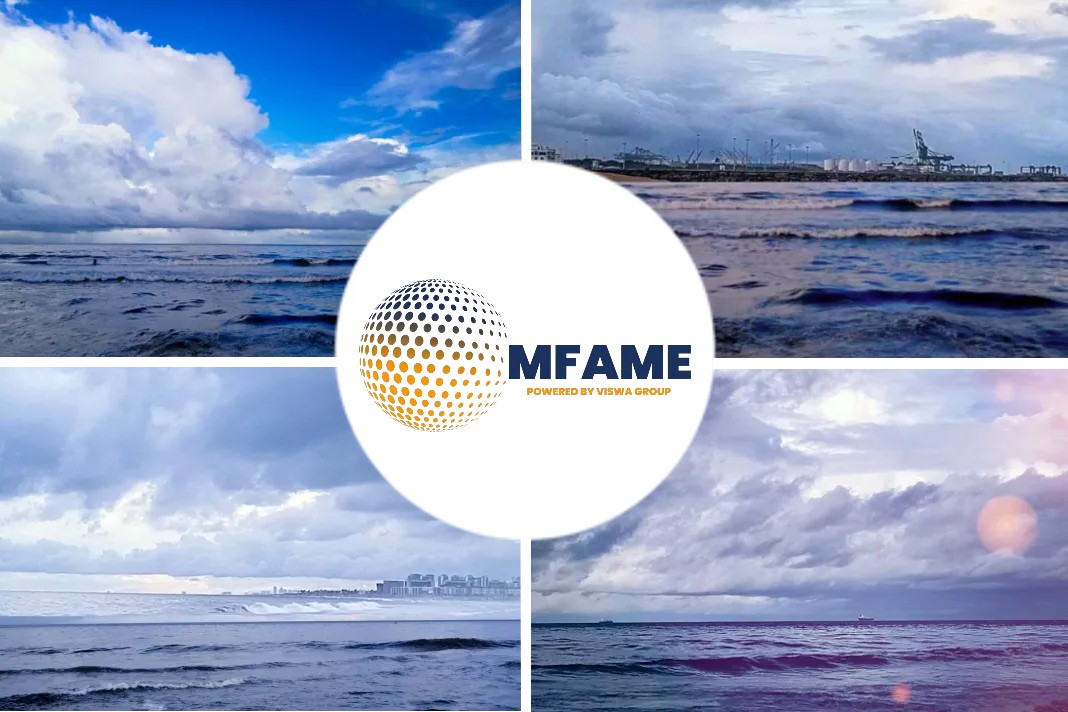- A $20 million project by Maersk will tow up 87000 tons of plastic from the Pacific Patch.
- The 2000ft oil boom will be towed by a 6ft net which will pull up the plastic waste.
- The Clean Up is expected to take 5 years and will be funded by selling the waste.
- The actual nature of the task will vary as scientists aren’t sure of extent of the Great Pacific Garbage Patch.
Maersk is taking a huge step towards environment cleansing and responsible shipping. The shipping giant went a step further by using deep sea voyage to accumulate plastic from the ocean floor in a $20 million experiment, reports the Freight Waves.
About the Ship
The Maersk ship is expected to ply Pacific Ocean to rid plastic patch estimated to be the size of Texas.
The Maersk Launcher, part of the company’s fleet of ships that typically serve the offshore oil industry, left San Francisco Bay this weekend bound for an part of the Pacific Ocean 1,200 miles away.
What’s the need for this?
The area, known as the “Great Pacific Garbage Patch”, contains an estimated 87,000 tons of plastic spread over an area variously estimated to be between the size of Texas and the size of Russia.
The Patch, which was first described in a scientific paper in 1988, stems from the Pacific’s swirling ocean current that pulls in plastic debris washed down from rivers and the shore and concentrated in a floating blob in the middle of the ocean. Similar patches exist in the Atlantic and Indian Oceans as well.
The size of the Pacific patch, along with other recent episodes, has catalyzed world attention on the problem of plastic pollution in the ocean. Now, the Maersk launcher will kick off a project that hopes to rid the ocean of some of that waste.
How will it be done?
Magnus Mikkelsen, one of the seafarers aboard the Maersk Launcher, says the oil boom, which is normally used to corral oil on the surface of the ocean, will be fitted with an additional net that hangs about 6 feet below the surface.
The nearly 2000-foot boom will be towed out in a straight line to the outer edge of the patch. There, the other end of the boom will also be attached to the Maersk Launcher, which will then voyage back and forth through the Patch pulling up plastic behind it.
“The boom will be shaped like a ‘U’ and towed after the vessel,” Mikkelsen said.
The Maersk Launcher is towing the first of up to sixty such booms that are expected to sweep the Patch, according to the project’s sponsor Ocean Cleanup.
About the Project
The non-profit has raised a total of $35 million since its 2013 funding for the project. It expects that it will take another five years to clean up half of the Pacific Patch. Ocean Cleanup, which was founded by a then 18-year old inventor, has since attracted sponsorship from software giant Salesforce.com and Peter Thiel, the co-founder of PayPal, and has added expertise in oceanography and offshore engineering.
For its part, Maersk is providing the maritime expertise on the project. The Maersk Launcher, a type of ship normally used to tow offshore oil rigs, was on hire to oceanic mining start-up DeepGreen, which will release the ship to Ocean Cleanup.
What’s in it for Maersk?
Steen Karstensen, chief executive of Maersk’s offshore vessel business, said in a statement it “is rewarding to see that our marine capabilities can be utilised within new segments, and to support solving the important environmental problem with plastics in the oceans.”
Once the Maersk Launcher completes a sweep, the ship’s cranes and winches pull up the debris to be bundled and shuttled back to shore via fishing vessels or other offshore ships. Ocean Cleanup hopes to sell the waste for recycling in order to fund subsequent clean-ups.
“For the first week or two, we might be the only ones out there,” Mikkelsen said. “But then these other vessels will join.”
Sailing Into the Unknown
Although scientists have a general idea of the size and scope of the Great Pacific Garbage Patch, the Maersk Launcher is still sailing into some unknowns.
Due to the ever-changing currents, the size of the patch fluctuates. There have also been little in the way of actual surveys of the patch from the water with most of the studies done from air.
Most of the plastic has degraded into smaller particles so there’s as-yet little concern about the debris fouling the Maersk Launcher’s propellers. But the patch’s depth below the water is still a mystery.
Why is it so difficult?
“We do not know how it looks out there and how deep the layer of plastic is, as the areas have been mapped out by air,” Mikkelsen said.
The first part of the expedition will actually test the longer boom. The Maersk Launcher only initially tested a boom that was one-fifth the size of the one that will do the actual sweeping.
Despite the extensive modelling of how the operations will go, Ocean Cleanup’s founder Boyan Slat says it’s still uncertain how boom will operate in open water amid changing currents and winds.
Regardless of the challenges, Mikkelsen says he and the other crew members are “excited to be a part of this project, as we are the first ship.”
“The crew are also eager to see how well the system works and if all the preparation have been sufficient,” Mikkelsen said.
Disclaimer: This video is intended for informational purpose only. This may not be construed as a news item or advice of any sort. Please consult the experts in that field for the authenticity of the presentations.
Did you subscribe for our daily newsletter?
It’s Free! Click here to Subscribe!
Source: Freight Waves

















